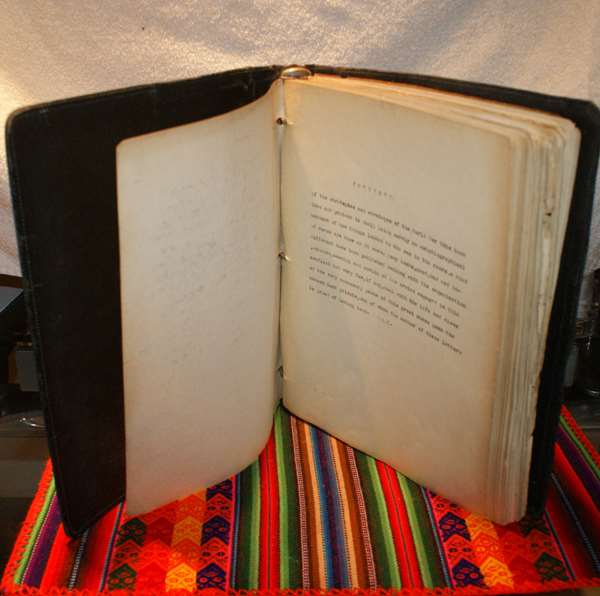First World War
Artifact W1-08: A TROOPER WRITES HOME
Provided by Douglas C. Rowland on behalf of Mr. John Shea

In going through his uncle’s effects as his executor, John Shea discovered a manuscript entitled “A Trooper Writes Home”. The title page described its subject as “Being the Letters of Trooper E.L. Thompson #115516 of the Fort Garry Horse Canadian Expeditionary Force during the Great War of 1914-18”. Trooper Thompson’s connection with Mr. Shea’s uncle (another WWI veteran) is unknown, as is his family background, his education and later life. However, a search of the archives provided supporting evidence for his service as described in the manuscript.
The manuscript takes us from the day of his successful enlistment on 24 May 1915, after two previous attempts had failed, through his extended period of training as a cavalry signalman, to his service in France, to his return to Canada on the SS Carmania on May 29, 1919.
It was likely that he was turned down on his first attempts to enlist because he had just recovered from a bout with tuberculosis. He notes that when war was declared in August 1914 he was in Muskoka “where I was an impatient patient” in the Sanatorium.
Trooper Thompson was an articulate and intelligent observer who makes the reader privy to his thoughts as they are freshly minted. It was over two and a half years after he enlisted before he was in action. He describes air raids by Zeppelins and Gothas in Britain; cavalry charges, swords out, across fields swept by machine gun and artillery fire in France and Belgium; and, trench warfare with its mud and gas and lice and rats. He describes what war had done to the countryside and to the people that inhabited it or fled across it. He makes you feel his hatred of war and, at the same time, his pride in the accomplishments of his fellow Canadians.
Trooper Thompson served in the Canadian Cavalry Brigade composed of the Royal Canadian Dragoons, the Lord Strathcona’s Horse and the Fort Garry Horse. It, along with Indian Cavalry, formed the Fifth Cavalry Division of the British Army (he refers to the British as “Imperials”). The brigade did not become integrated with the Canadian Corps until the war had ended.
Despite being in the thick of the action, he came through virtually unscathed.
It is a fascinating read and makes the reader want to know more about the man who wrote it and made his experiences so real.
The Sheas have donated the manuscript to the CWM Library.
